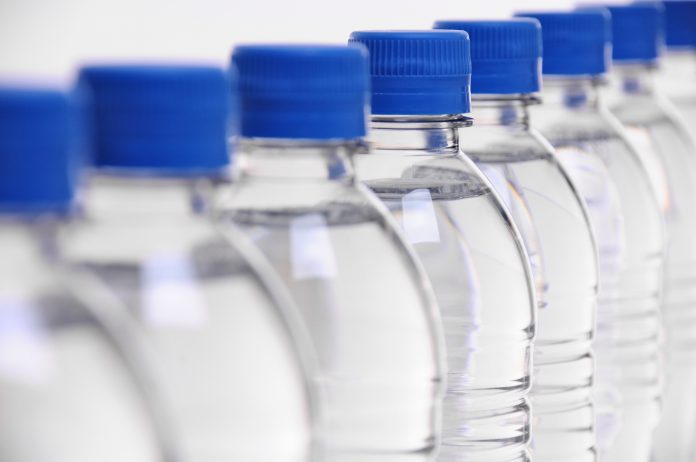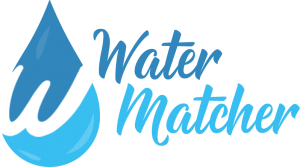
Why Do People Drink Bottled Water?
There are many reasons why people believe bottled water is better for you than tap water. However, these beliefs seem to be misplaced. While there are indeed some bottled water brands that may be ultra-filtered, the fact remains that it is then placed in a plastic bottle. It may be that plastic water bottles are doing more harm than good. Why do people decide to start drinking bottled water and what are some of the dangers associated with it? You may find some answers below.

Water Supply Concerns: The Flint Water Controversy
The issue of municipal water supply hazards and concerns was magnified when in 2016 the city of Flint, Michigan, was declared a disaster area. This declaration wasn’t due to any storm or natural disaster, but rather the public water supply.
In that year it was noted that the levels of lead and other contaminants in the water were increasingly high. People in some of the poorest areas of the state were being told that their water was no longer safe to even bathe with. How did this crisis happen and what effect has this had on the public’s perception of the municipal water supply?
Before 2014, Flint had gotten its drinking water from Lake Huron and the Detroit River. Apparently, the cost of getting the water and treating it was rising, and the already-poor city government, decided to cut costs by changing the water supply to the Flint River.
The one thing the government didn’t think about when they made this switch was the aging piping system that ran from the river to the treatment facilities and then back out. The pipes were made entirely out of lead, which has been proven in the last few decades to be highly toxic, especially to children. As the water traveled from the Flint River treatment plant to the 100,000 residents, it became contaminated with high levels of lead.
When the residents uncovered the contamination, local and state officials vowed to fix the problem. By that time, however, the contaminated water had been running through faucets and water fountains for two years. That’s two years of drinking and using water that was not fit for use by any standards.
In 2016 when the federal government declared the Flint water crisis a national disaster, the residents were told to stop using the water altogether. They were instead told to use only bottled or filtered water not just for drinking and cooking but also for brushing teeth and bathing.
The local government vowed to clean up the Flint River and the municipal water supply. One vital piece of the plan involved the replacement of all lead pipes. This task is not scheduled to be complete until 2019.
As of 2017 the water was tested and deemed to be at safe levels according to the EPA; however, residents were still advised to drink bottled or filtered water in an abundance of caution.
Lead poisoning
Lead poisoning can have serious consequences, especially for children. It can cause lifelong mental and cognitive disorders. In some young children and babies, exposure can lead to physical delays and even deformities.
Government money has been set aside to help any child in Flint who begins developing health issues as a result of the contaminated water.

Legionnaires’ Outbreak
From 2014 to 2015 a little-known health emergency was occurring in Flint. At the time it was thought to be a freak occurrence, but in the months since the water contamination issues were revealed, the outbreak is now being seen in a new light.
In that year, 87 people became ill or were hospitalized due to Legionnaires’ disease. This very rare disease is a bacterial infection that causes pneumonia. It is a waterborne illness and is spread through direct exposure to contaminated droplets of water. Over 12 people died from the disease. The CDC was on scene at the time and categorized the crisis as an outbreak.
It is believed that the bacteria that causes Legionnaires’ was present in the municipal water supply. Its presence brings to light the fact that the water must have had insufficient levels of chlorine, which is a standard way to clean water to make it suitable for drinking.
Had chlorine been present in the Flint water supply, the bacteria would not have been able to multiply as it did. This conclusion raised more doubts over whether the water supply was cycled or cleaned at all before reaching the citizens.
It is possible that there was chlorine in the Flint water supply and due to the high levels of lead and iron, the chlorine’s effectiveness was depleted. This deficiency might be because chlorine and metal have a strong chemical reaction, and if one overpowers the other, the larger presence is the victor.
Results of the Flint Water Crisis
Americans all over the country watched in horror as media outlets covered the water crisis in Flint. It reinforced the skepticism and fear many people had concerning their own municipal water supply. Tap water isn’t the primary source of water consumption anymore for families.
This is caused in part by the public perception of the number of bacteria and contaminants in municipal water. Some people believe it tastes and smells different than filtered or bottled water. Others may have a sensitivity to some of the possible contaminants or the additives, such as Fluoride, so they avoid drinking from the tap at all costs. For those people who didn’t have an aversion to their tap water, the events in Flint may have altered their perception.
The crisis in Michigan also led to a report that over 3,000 areas in the United States had the same outdated water system as found in Flint. That means there could be thousands of miles of lead pipes buried underground from which metals may be leaching into water supplies. No one will know the true extent of the damage any time soon.

The BPA Factor
Many years ago, there was a chemical called Bisphenol-A, or BPA, and it was found in many plastic products. It was used to make everything from baby bottles to water bottles, and plastic containers to eyeglass lenses. It was even used to coat the inside of canned goods to keep the metal from corroding into the liquid inside the can. It was added to plastic to make it stronger, and it did its job well.
What people didn’t know was that BPA also had adverse effects on the body. If BPA was consumed, the chemical compound appeared to the body systems like it was the hormone estrogen because it looked and acted like estrogen. Its appearance in the body, therefore, signaled to other body functions that estrogen was present and those systems reacted accordingly.
Surely, this didn’t often happen. How would BPA be able to get into the body in the first place? Remember all that plastic it was found in? That’s where it was coming from. It was seeping from the plastic into the liquid and food you were drinking and eating. It was being fed to babies through their bottles even after their mother’s had already consumed it during pregnancy.
What started happening? People began having high levels of BPA in their bodies, and it was messing them up. It was causing little girls to go into puberty early. It was causing people to be unable to conceive because both the males and females had too much estrogen. It was even causing people to develop thyroid issues, heart disease (at three times the rate), Type 2 diabetes (at twice the rate) and obesity (estrogen was signaling the body to store excess fat).
When the link between BPA and health issues was investigated, the public called for some real change. Companies stopped using BPA in products that would hold food or liquid.
It was banned by the government for use in baby bottles and sippy cups, but the ban was handed down after companies had already stopped using the chemical in those items in response to the health findings.
If BPA was the bad element in plastic water bottles, then they must now be safe to use, right?

The Dangers Lurking in Plastic Water Bottles
1. Water Quality
Most people believe that the water they’re getting when they purchase it in a bottle is better for them and less free of toxins and contaminants than their tap water. The truth of the matter is this is not correct at all.
Twenty-five percent of the water in bottled water is actually tap water. Sometimes that water has been filtered, and sometimes it hasn’t. The fact is there may be more dangerous bacteria and toxins in that bottled water than in your tap water. The companies who bottle the water aren’t held to the same standards and testing as municipal tap water.
The Environmental Protection Agency is responsible for monitoring the public water supply and having municipalities take action when that supply is not up to the EPA’s standards of what is healthy and what isn’t.
The Food and Drug Administration is the agency responsible for monitoring bottled water. They do not have anywhere near the same testing practices and procedures the EPA does; therefore, bottled water doesn’t go through the same rigorous testing for contaminants. For this reason alone, it is safer to drink your tap water in most cases than it is to drink bottled water.
2. Plastic Contaminants
You’ve learned how BPA was removed from widespread use due to the harmful effects it had on the body. However, BPA is not the only chemical that can cause issues and health problems for you. There are other chemicals found in plastics that can be just as harmful if they wind up leaching into your water.
One such chemical is PET, and it is used predominantly in water bottles. When it breaks down, it too can leach into your water, and it can cause similar disruptions in the endocrine system because it acts as an endocrine disruptor.
An endocrine disruptor is a human-made chemical that, when it enters the body, can change, copy or stop the production of hormones in the endocrine system. This disruption can cause body systems to fall out of whack when either too much or too little of a hormone is produced.
The liver is the most telling organ when it comes to the influences that chemicals like BPA and PET can have on the body. The liver is the last line of defense against contaminants that enter the body.
Some chemicals and toxins can be filtered out; however, the liver has to work overtime to get the job done, which can lead to illness, including liver disease.
3. Bacterial Growth in Plastic Bottles
In an effort to reduce the number of plastic bottles you buy and use, you may have gotten into the practice of refilling one or more. In your mind, it’s better for the environment to conserve them right?
While that part may be correct, it is quite the opposite for your health. Refilling plastic water bottles is not recommended due to many factors. The biggest one is because of bacterial growth. The moist environment is the perfect breeding ground for bacteria.
Since most people don’t thoroughly wash and dry their bottles between use, the bacteria can continue to grow. In one study, a plastic water bottle that had been refilled and reused was tested. It was found to be teeming with high bacterial content, mold, and contamination due to saliva and fecal matter.
4. Heat and Plastic Bottles
If you have ever left a bottle of water in your car while you ran into the gym, only to come out and chug it, you may want to stop that practice. One of the most significant factors causing chemicals such as PET to seep into the water is heat.
When the plastic is heated up, either because of the hot car, a dishwasher or even a hot liquid, it can cause a breakdown in the chemical components of the bottle. The heat then causes the release of the contaminants into the water which you then drink.
Another thing to consider is reusable BPA-free cups, while better than regular plastic water bottles, are not immune to this same breakdown. You should not run such a cup through the dishwasher or fill it with hot liquid.
These cups can also fall victim to the bacterial growth discussed above if they are not washed and dried correctly. To clean one of these cups, you should use a little bleach and baking soda, vinegar or anti-bacterial mouthwash plus a full cup of water. Let it soak, rinse and then thoroughly dry it. That will at least stop the germs and bacteria from contaminating your cup.

Alternatives to Water Bottles
You have a few options when it comes to other products to hold your water. We found three for you to consider.
Glass – The best alternative in terms of zero contamination or bacterial growth; however, it breaks easily and is heavy. Not a realistic choice for carrying around, even with a protective sleeve (it still breaks).
Stainless steel – Good alternative and can be child-friendly (unless thrown). Can be cleaned and sterilized easily. No chemical reaction is involved when heated and it keeps water cold and hot beverages hot. One additional benefit is that it doesn’t retain the flavor of one drink when switching to another.
BPA-free reusable cups and bottles – These are the most common alternatives, and while better than bottled water, they can still contain chemicals that leach, especially when heated up.
Filters
Home filters – Good for being able to use the tap to refill your glass or stainless steel bottle.
Carbon filters – It does an excellent job of filtering large particles, not small ones. However, it does remove tastes and odors (chlorine). Good for filtering small amounts of water, such as self-filtering bottles, and mostly still attached to BPA-free plastic. Some have stainless options. Not practical for large quantities of water.
APEX Countertop Drinking Water Filter
Reverse osmosis – Usually installed under a sink, it can process and filter large amounts of water. It filters out both large and small particles, odors, etc. The water is forced through a membrane that allows the liquid through but not the contaminants.
Infrared – Installed at the entry point for water in the home to ensure filtered water runs out of every faucet. Uses ultraviolet light to destroy bacteria while at the same time preserving good minerals. Not as useful as reverse osmosis in removing chlorine, lead, and other particle contaminants.
Apec Portable Countertop Reverse Osmosis System

What Can You Do To Help Fix the Problem?
There are a few things you can do to help lessen the chemical contamination by plastic:
- Stop buying bottled water
- Find an alternative to plastics cups and containers
- Don’t eat canned goods
- Drink tap water
You are always on the lookout for ways to improve your health and that of your family. While you may have known some of the dangers lurking in your plastic water bottles, you may not have known them all. It is now up to you to take some of this information and apply it to any area of your life that you can.






